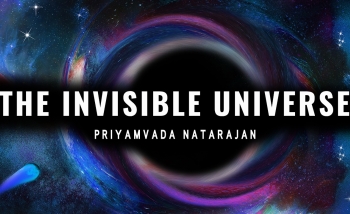In a coordinated publication of results, members of several pulsar timing arrays around the world have presented evidence of a cosmic cacophony of gravitational waves that has the potential to advance our understanding of black holes and the evolution of the cosmos.
Gravitational waves are ripples in the fabric of spacetime, created when two massive objects hurtle around each other at extremely high speeds and collide. In 2015, the Laser Interferometer Gravitational-Wave Observatory (LIGO) famously made the first direct detection of gravitational waves, stemming from the merger of two stellar mass black holes.
Pulsars are rapidly rotating neutron stars that emit pulses of radiation at regular intervals. Using existing knowledge of when pulses should arrive, pulsar timing arrays use radio telescopes to measure fluctuations in the fabric of spacetime that could signal the presence of gravitational waves caused by binary supermassive black holes orbiting each other in the centres of other galaxies. Pulsar timing array observations allow scientists to search for gravitational waves at much lower frequencies than ground-based detectors like LIGO.
Unlike LIGO’s detections of individual black hole binaries, pulsar timing arrays are most sensitive to a constant background hum of gravitational waves originating from many sources spread across the cosmos. The signal the collaboration found is consistent with that expected from supermassive black holes that spiral together and merge when galaxies collide. If confirmed, this could provide insights into the evolution of structure in our cosmic history and help answer questions about the formation of galaxies. There is also the tantalizing possibility that the background could contain contributions from “exotic” processes in the early universe.
“Today’s announcement marks a step forward in our quest to understand gravitational waves,” says Luis Lehner, the Carlo Fidani Rainer Weiss Chair in Theoretical Physics at Perimeter Institute. “The results appear to closely match what we’d expect from theory. Pulsar timing arrays are proving themselves an invaluable tool in our toolbox as we seek to answer fundamental questions about the nature of our universe. Congratulations to everyone involved in this result.”
The synchronous announcement included leaders from the North American Nanohertz Observatory for Gravitational Waves (NANOGrav), European Pulsar Timing Array, Indian Pulsar Timing Array, and Parkes Pulsar Timing Array.
“As a cosmologist, I’m fantastically excited about the prospect of seeing the universe in an entirely new way,” adds Katie Mack, the Hawking Chair in Cosmology and Science Communication at Perimeter. “We’re certainly going to learn a lot about supermassive black holes and galaxies, but every time we’ve opened a new window on the cosmos in the past, we’ve seen something unexpected, and I can’t wait to find out what that will be.”
Illustration Credit: Olena Shmahalo for NANOGrav
Further exploration
À propos de l’IP
L'Institut Périmètre est le plus grand centre de recherche en physique théorique au monde. Fondé en 1999, cet institut indépendant vise à favoriser les percées dans la compréhension fondamentale de notre univers, des plus infimes particules au cosmos tout entier. Les recherches effectuées à l’Institut Périmètre reposent sur l'idée que la science fondamentale fait progresser le savoir humain et catalyse l'innovation, et que la physique théorique d'aujourd'hui est la technologie de demain. Situé dans la région de Waterloo, cet établissement sans but lucratif met de l'avant un partenariat public-privé unique en son genre avec entre autres les gouvernements de l'Ontario et du Canada. Il facilite la recherche de pointe, forme la prochaine génération de pionniers de la science et communique le pouvoir de la physique grâce à des programmes primés d'éducation et de vulgarisation.
Ceci pourrait vous intéresser



L’univers invisible : conférence de Priyamvada Natarajan webdiffusée en direct
février 24, 2021

